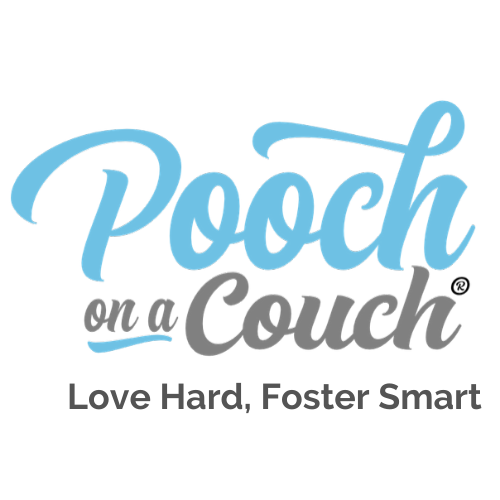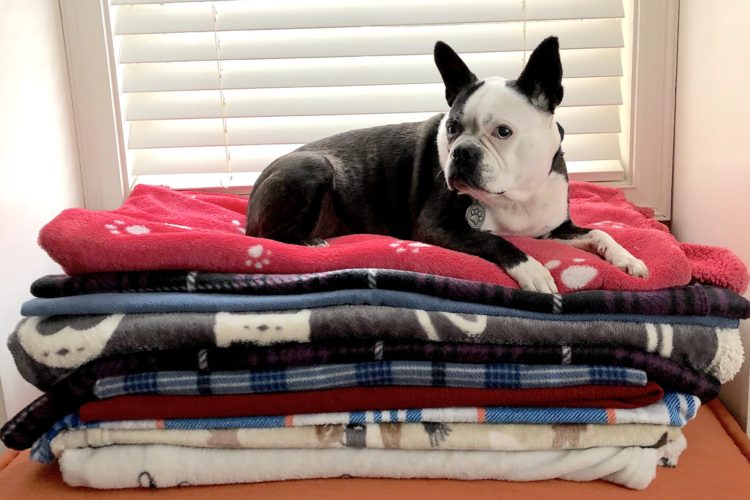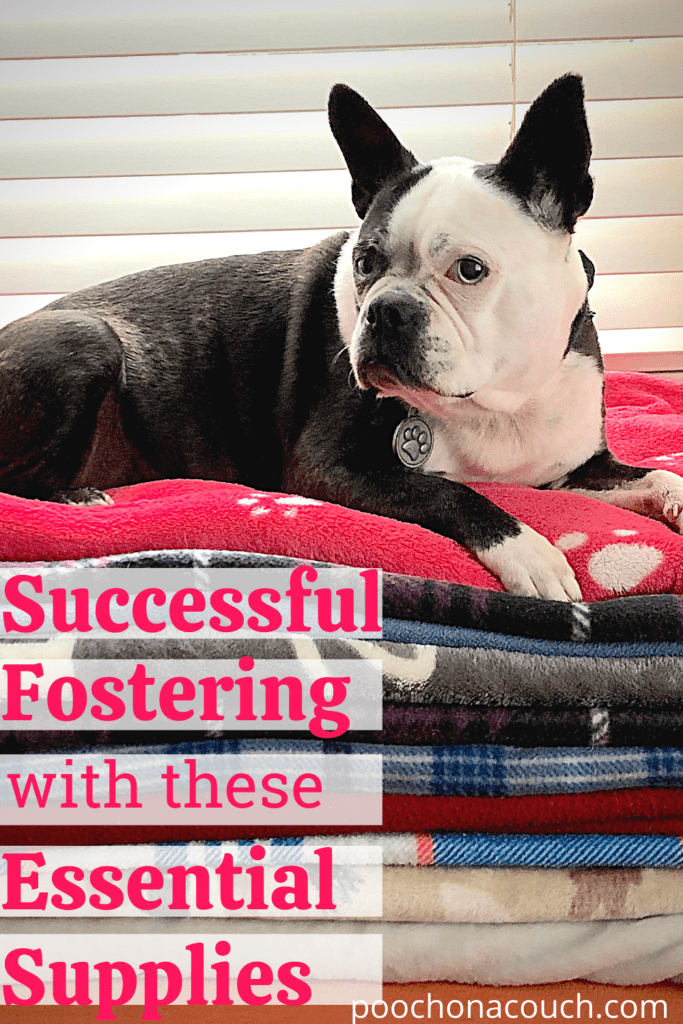updated 5/23/2021
Yes, There Are Essential Supplies for Dog Foster Homes.
In other words, fostering isn’t free.
Who knew fostering dogs required so much “stuff?” Well, it does!
Sometimes, being a foster dog parent means being part vet nurse, part daycare worker, part manners trainer.
As you foster more and more, you’ll agree: There ARE essential supplies for foster homes that you will need.
As you read, your budget may holler, but don’t throw in the towel over a supply list! Prioritize the items on your list and acquire the equipment as you need it or find it.
Choose good quality; not only will it last, but it will also function better for you.
When I got started fostering dogs, all I had was a spare crate. I soon learned about other essential supplies needed in foster homes. As I continued to foster, my supply stash grew. It sure made fostering easier, because I no longer had to make do with what I had or try and come up with a solution out of thin air.
Here is are the essential dog supplies needed in foster homes.
AFFILIATE STATEMENT:
Some links in this post contain affiliate links. As an affiliate, I earn a small commission on qualifying purchases at no additional cost to you.
Essential Supplies Needed In Foster Homes
1. A Crate Is Essential
A crate is considered to be one of the most important essential supplies needed in foster homes.
I don’t think you can successfully (or safely!) foster dogs without them.
Most dog professionals will tell you that crate training your foster dog is a basic need and skill. Let’s take a look at why.
If you are not a fan of the crate, that’s fine – but crates play an important role in rescue and it is essential. Here’s how crates are beneficial in foster homes:
- allow a foster dog time to de-stress when first arrives
- makes house training soooooo much easier.
- management of meal times and prevents resource guarding
- self-soothing or quiet time activities
- safe recovery from illness, injury, or surgery
- nighttime routine – some foster dogs need help learning how to sleep at night
- safety when alone at home
- safety while transporting
This is the crate I purchase over and over again:
MidWest Life Stages Heavy-Duty Folding Metal Dog Crates – Double doors!
I like this crate because:
- It folds up nice and neat and stores easily.
- There are TWO LATCHES on each of the two doors. Double-latched doors are more secure than single latches because they better prevent injuries if a dog tries to escape the crate.
- There are little rollers on the bottom make it easier to move and reposition if needed.
- The bottom tray can be easily removed for cleaning.
The negative feedback I have about this crate is that if you are going to use it for transporting dogs in your car, it does rattle and squeak, and you do need to secure it in the vehicle. Also, one of my dogs can bend the bars of the basic model so I have to get the Ultima Pro model for him. It is made with thicker gauge wire.
It is important to choose the right sized crates for the dogs you will be fostering. Follow guidelines for selecting crates of the right size. A size too big is always better than a size too small, especially if the dog will be crated for several hours at a time, or if they are recovering from surgeries or undergoing heartworm treatment. Likewise, a crate too big might slow down your house-training efforts, particularly when training puppies.
The Petmate Travel Carrier
While I’ve never experienced this with my foster dogs, some dogs prefer these plastic, hard-shell crates over the wire crates. For that reason, I keep a couple of these crates in storage. The Petmate Travel Carrier is great for puppies. It’s safe for transporting them to the veterinarian. I found all of mine second-hand, however, if you prefer new, there are several sources and designs available.
Remove collars and harnesses before crating dogs to avoid injury.
**A word of caution: NEVER leave your dog in a crate while the dog is wearing a collar or harness. It is a strangulation hazard. Also, Inspect your crates often. If you see broken or bent wires or chewed plastic, for example, remove the crate from service and repair or replace it.
2. A Baby Gate Is Also One Of The Essential Supplies Needed In Foster Homes
You will need baby gates. Trust me when I say this! Through experience, I’ve chosen my favorite. My advice? Skip the wooden sliding baby gate. They don’t work well, are aggravating, and I find them flimsy.
I like the Regalo brand or the Summer brand metal walk-through baby gates. Go ahead and get the extra tall model. You’ll need it! Plan on fostering big dogs? Get two! You can stack them one on top of the other to prevent a larger dog from scaling the baby gate.
I keep several baby gates in use most all the time.
Using baby gates helps me in so many different ways! I can feed dogs in different areas of the house, they help me manage new introductions, teach calming behaviors, manage play or excitement, aid in the recovery of spay/neuter surgeries, just to name a few.
I also suggest using baby gates to prevent your foster dog going into parts of your home where you don’t want them. For example, foster dogs that are not house-trained do not need freedom to go anywhere in your house.
Baby gates are essential if you are caring for a dog recovering from heartworm treatment or surgery.
Baby gates are essential equipment during house training! Baby gates are also essential when you need to implement quarantine protocols. Read more on how to quarantine a foster dog.
Buying baby gates brand new can get expensive if you plan on fostering multiple dogs at the same time. Resale sites may be a great source to get gently used baby gates at a reasonable price, and don’t forget to ask your dog rescue community if anyone has a loaner baby gate you can use if you are in a pinch. I’ve tried to find baby gates on giveaway sites and I find that most of the time the product is broken or missing parts.
3. Get An Exercise Pen
You will want an exercise pen, or “x-pen”. I consider x-pens essential supplies needed in foster homes. I use them for many of the same reasons I use baby gates. I chose this 8-panel exercise pen because to me, it offers the most flexibility – all 8 panels separate from each other which means I can create many configurations. I can even use one panel as a temporary door barrier when I don’t want to install a baby gate.
Sometimes, dogs that are recovering from illness, injury or surgery need more room than a crate but less space than a room in your house and an x-pen is a perfect solution. In addition, I use x-pens with dogs that are not completely house trained, dogs that are easily frustrated when in crates, and any situation where I need to separate dogs for management reasons.
If you plan to foster litters of puppies, x-pens are most definitely at the top of the list of essential supples needed in foster homes.
Exercise pens come in a variety of heights, some designs have doors and others do not. There is even one design that comes with a top over it. It’s called a pet gazebo and they can come in handy.
4. A Variety Of Bowls Is Totally Essential
There’s the noise issue
I have four types of bowls: Ceramic, stainless, elevated, and slow-feeder.
While many dog experts recommend using stainless steel bowls for feeding and water, I recommend having feeding bowls in both stainless steel and ceramic.
Why?
Sometimes, foster dogs are afraid of new objects. Stainless bowls, for example, may make a sound that’s frightening.
I want options should my foster dog require a different feeding set-up. I always check labels to make sure I’m comfortable with the materials used to manufacture any item I purchase for my dogs or household.
Ergonomics are important for dogs, too
If you have senior foster dogs, large breed foster dogs, or foster dogs that are large breeds, or have arthritis or another medical condition, you may consider using elevated dog bowls so that mealtime is comfortable. In fact, there is a dog bowl advertised for bulldogs. Check it out here!
Help Dogs “Slow Their Roll” When Eating
Use the “bumpy” ones for dogs that eat way too fast. There are many designs, both in plastics and stainless. The one below is by Outward Hound.
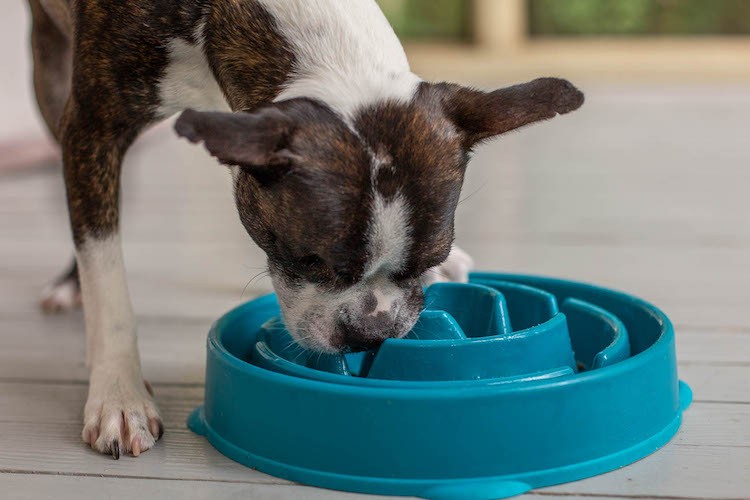
5. An Inexpensive Dog Bed
Have you shopped for a dog bed lately? Yeowza at the choices! Not to mention all of the different designs available, all promising to deliver the best in comfort for your dogs. I don’t have to tell you it can be expensive to buy dog beds.
Well, you can purchase the nice fancy ones, but they may (ahem – WILL) get destroyed! Many foster dogs tear up dog beds, especially when left alone in the house or crate. My personal dog, Otis does this. He’s also a dog that cannot have crate padding, instead he gets a pile of blankets for cush in his crate. My favorite crate pad is this one. Simple, easy, and I pile blankets on top.
I shop for my dog beds at discount places like Big Lots or Home Goods, but I’ve also been lucky to pick up some at community fundraisers for pet food pantries.
Dog beds are considered essential supplies needed in foster homes.
Besides providing comfort, I use dog beds or crate pads to teach “place” and “settle” – two cues that help a dog with manners and self-soothing activities.
Several of my rescue friends like the Kuranda bed, (or similar) an elevated framed bed with a woven fabric stretched inside the frame. It’s sorta like a cot for dogs. Durable, and you can take it outdoors and hose it off to give it a clean. Pee won’t hurt it, either.
6. Blankets, sheets, and towels are essential!
Understatement of the year: blankets, sheets, and towels are essential supplies needed in foster homes.
Your discount big-box store should have exactly what you need – I grab the rolled-up fleece blankets for $3-$4 each. They are quite durable for the price you pay and they wash up well.
I give them as gifts when my foster dogs are adopted so my foster dog has an item with a familiar smell from my home. It helps them as they settle into their new surroundings.
If you foster puppies or plan on helping whelp litters, you’ll need lots of sheets and towels. Same is true if you foster special-needs dogs or hospice dogs as often these dogs may have urinary issues.
I use sheets to cover my furniture. I find it easier than a heavy, specially designed sofa cover.
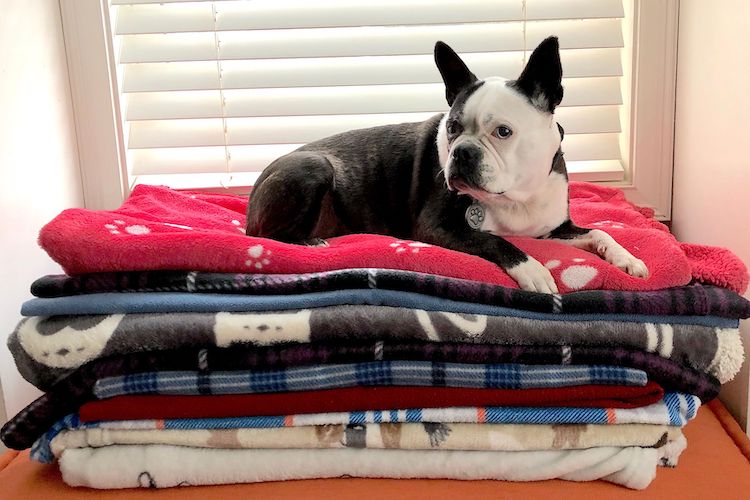
7. Every Foster Dog Needs A Collar (Or Two Or Three)
Your choice of dog collar is going to be driven somewhat by how your dogs are managed at home, their activity level, and the benefits/risks associated with your choices. You will probably find that you need a variety of collars.
A flat, buckle collar
So many materials and styles from which to choose! Personally, because I’m shopping collars on a budget and not for a fashion statement, I shop the end-caps of pet stores for great deals. I avoid the collars found at the dollar stores, as the buckles do not stay secure. Just a gentle tug sometimes is all that is needed for the buckle to come unclipped.
I also go right to the BlueBerry Classic Dog Collar when I need more collars. You can even have them personalized with the words “Foster Dog” so you can use the collar over and over again.
A Martingale Collar
A Martingale collar is a limited choke collar – it only tightens to a point. It’s also known as a greyhound collar. You want a Martingale collar for transporting unfamiliar dogs, and for certain breeds that have smaller heads than necks. (the racing hound breeds, for example)
I do not use a Martingale collar often as my foster dogs typically do not need one, but I have them in my stash of supplies.
My Opinion: You should invest in durable collars, and you should keep those collars. When your foster dog is being adopted, tell the new family what gear to purchase for the dog and ask them to bring that gear with them on adoption day so you can make the exchange. Giving away collars gets expensive. Invest in good quality collars and keep them!

7. Tag Your Foster Dog
I think one of the best investments is the ID tag, and I think rescue organizations should require their ID tags on every dog in foster care, even if the dog is microchipped. Tags are essential supplies needed in foster homes.
But, if the organization’s budget just doesn’t allow for the production of ID tags, then why not get your own made?
Fact: Dogs wearing ID tags are returned home quicker than dogs that are microchipped.
Get them made with the rescue’s name and number (if you foster for only one organization) or put your own contact information on the tag and let the agency know you’ve done so.
You can get collars with ID information on them. Collars can be embroidered, or plates with ID information is etched and attached to the collar.
My Opinion: Ask the new family to purchase their ID tag prior to coming to pick up the dog and have it attached to the new collar.
Remind your adopters that ID tags are important: dogs are quite confused about their whereabouts for a couple of weeks post adoption, and are at risk of running.
8. Leashes – Variety Is Essential
Leashes come in different lengths and designs because each offers different and optimal function. The more you work with your foster dogs, the more you’ll agree that a variety of leashes are essential supplies in foster homes.
First, Choose A 6-Foot, Flat Leash with A Bolt Snap Clasp
I find that if I have to have one leash, the 6′ length give me good flexibility. I have shorter ones as well, but started with this length. I also choose cotton webbing over nylon, and certainly save the fancy-schmancy rope leashes for AFTER your foster dog has a good handle on loose-leash walking. Nylon leashes can leave nasty rope burns. One day I will upgrade to a leather leash, I think they are the best.
A 15-Foot, Flat Leash With A Bolt Snap Clasp
I use a 15′ leash for working recall. also known as coming when called. You can get longer leads, 20′, 30′ even 50′ in length!
Careful — larger dogs with poor leash skills can hurt your back or pull you down if you have them on too long a lead.
Put The Flexi-Leash In The Trash
A Flexi-Leash has no place in fostering dogs. There is not a single activity I can identify where using a flexi-leash is superior to a flat leash. But I have countless tales of disaster occurring while flexi-leashes were used.
Flexi-leashes were designed for convenience (laziness) and home organization/storage. They look more tidy than a tangled mess of leashes. Give it up. Hang a hook on the wall instead.
9. Harnesses Are Essential Supplies In Foster Homes
A harness is a valuable tool.
When you are training loose leash walking you get somewhat better control and it’s safer for you and the dog. If your foster dog is a puller, lunger, or spinner, pressure can become too great on the neck and cause damage to the trachea, vertebrae, and in some breeds, the eyes. Pressure on the neck by a collar is never good. (or comfortable.)
Many articles on the harness-vs-collar discussion say that harnesses discourage pulling. I don’t agree with that statement in total.
Ultimately, you are going to choose harnesses based upon the dog that needs one and the goals you are trying to accomplish.
No-Pull or Front-Clip Harnesses
This is an essential in my foster home.
Here’s how they work: most of these harnesses have two different d-rings where you can fasten the leash clip, one along the midline at the back/shoulders, and one at the chest.
When the leash is fastened to the chest ring, any time the dog pulls forward, the tension on the leash directs the dog to the side. In order for the dog to continue to move straight ahead, not sideways, they must slow down.
There’s recent discussion on the importance of fit in these harnesses and stress on the shoulders with ill-fitted harnesses with chest straps. For more information, check out this article from Whole Dog Journal.
Vest Harnesses
As the name implies, they look like vests! Typically worn by smaller dogs who in general have a bit of a harder time finding a harness to fit properly. A word of caution: It is sometimes easy for a dog to peel themselves out of these harnesses, so use care if you have a dog that’s fearful. These can be great starter harnesses for puppies, but do be careful and don’t let them peel out of one.
I never use these type harnesses for dog rescue transports.
Step-In and “H” Harnesses
I like “step-in” harnesses – For a while, they were the only harness on the market that fit the body shape of a Boston terrier. With multiple adjustment points, I find this design fits snug and reduces the chance that a dog can wiggle out of them. The “H” harness is designed, well – in the shape of an H. It also has multiple adjustment points.
The most important feature in a harness is the fit – not all harnesses are going to fit all body types so you will, over time, collect a variety of harness styles and sizes.
10. A Muzzle Is An Important Tool
It is my firm belief that every dog should be trained to wear a basket muzzle. Unless you have a short-snouted dog, the basket muzzle will fit most dogs.
Most dogs don’t need to wear one, but all dogs should be familiar with wearing one. Even the most docile dog can bite and bite hard if injured or in pain, and it is reasonable to assume that the sooner a muzzle is in place, the sooner urgent care can be provided.
There are great training games on Youtube, and talk with your trainer. The fit is important: protect the eyes and make sure the dog can breathe, eat, and pant while wearing a muzzle!
11. Enrichment Activities For Foster Dogs
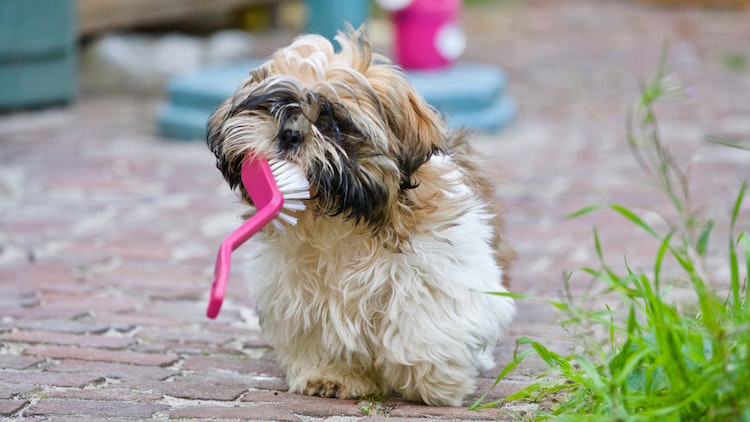
Dogs Need To Chew
Chewing is a normal behavior for dogs. Give them opportunities for safe chewing! In the absence of appropriate chew toys, dogs will select inappropriate items: sticks, rocks, wire, your shoes and your table leg, causing great damage to their teeth and mouth, and your valuables.
Provide ample choices, dogs get bored with the same stuff. I routinely pull out toys from the toybox and put them away. Weeks later, i’ll pull them out again and it’s like they are new.
Dogs Need To Play
Dogs love to interact with you! Yes, they need time to play with their canine pals, but they need to play with you, too! Fetch, chase (the ball – not people) tug games are examples, but you can create games out of your training time, too.
Did you play the game “red light, green light” as a kid in school? It’s a great game to adapt to your loose leash walking exercises.
I have one special toy that I only use when we are playing hide and seek inside. Dogs love hide and seek games! Here are 3 different ways you can play hide and seek with your foster dogs.
Dogs Need To Think
Mental exercise is as important as physical exercise. You will discover a lot of fancy, complicated (and pricey) products for purchase, but you can create your own, too. I spend more of my dollars on durable toys my dogs use during times when I ask my dogs to self-soothe.
12. A Security Camera
Yes, you will need a nanny cam, security cam, whatever you want to call it. The current camera I’m using is from Wyze Cam and cost less than $30. It is super easy to use and I can check in on my dogs to see how they are doing. I can also assess a new foster dog’s tolerance for being alone in a crate or out.
Read my story: Why I Foster: Emmy Lou (and how a nanny cam gave me all I needed to know to help this little nugget feel better about her world.)
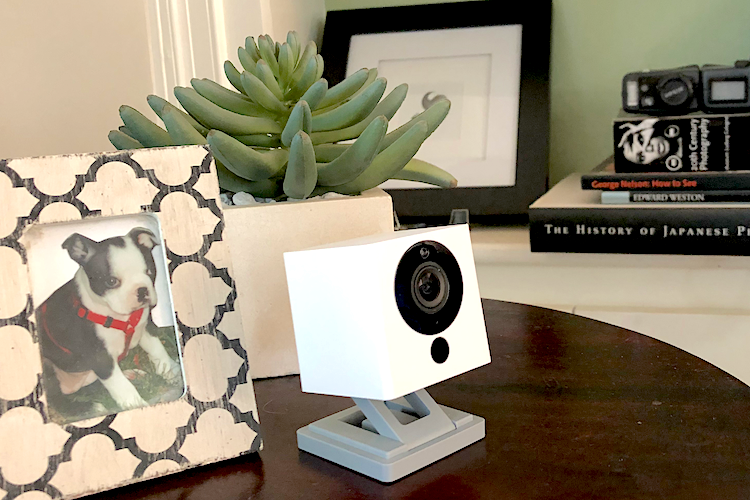
13+ Miscellaneous Essential Supplies Needed In Foster Homes
- Calming Music
- Adaptil Diffusers
- A First Aid Kit
- Chux Pads
- Grooming supplies
- Journals
- Checklists
- Sweaters/Jackets
What would you add to the list? What are the can’t-do-without items you love? Let us know!
Pin Me!
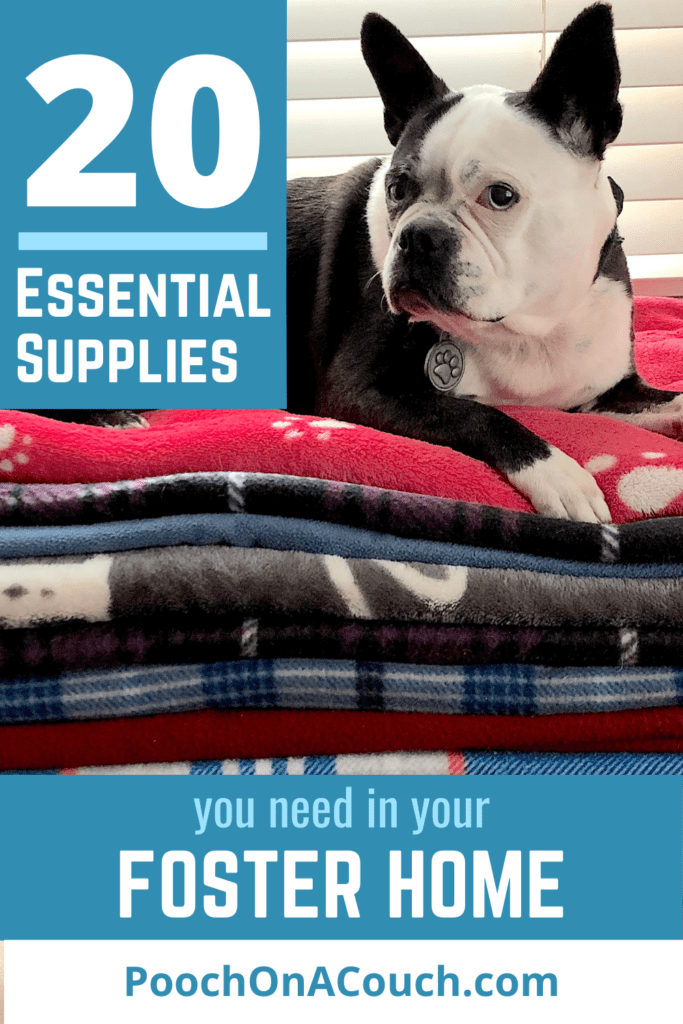
Popular Posts
How To Foster Dogs: 10 Skills You Need To Know
How To Choose A Dog Rescue Agency
Why I Foster:Baci – AKA How Short-Term Fostering Can Help a Rescue Agency
